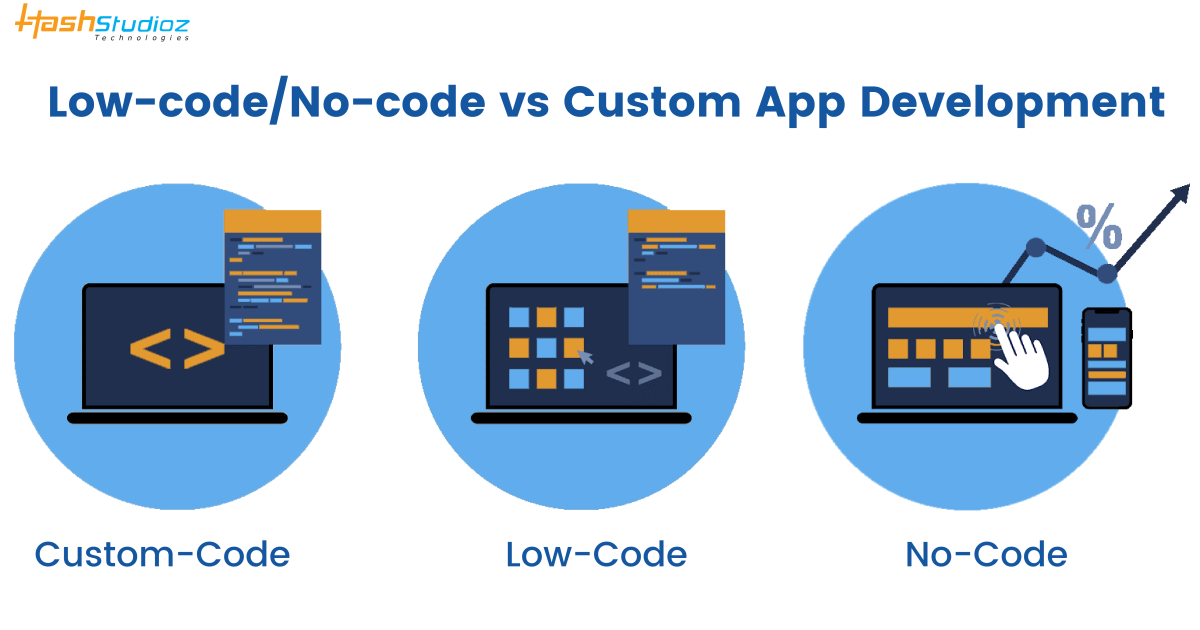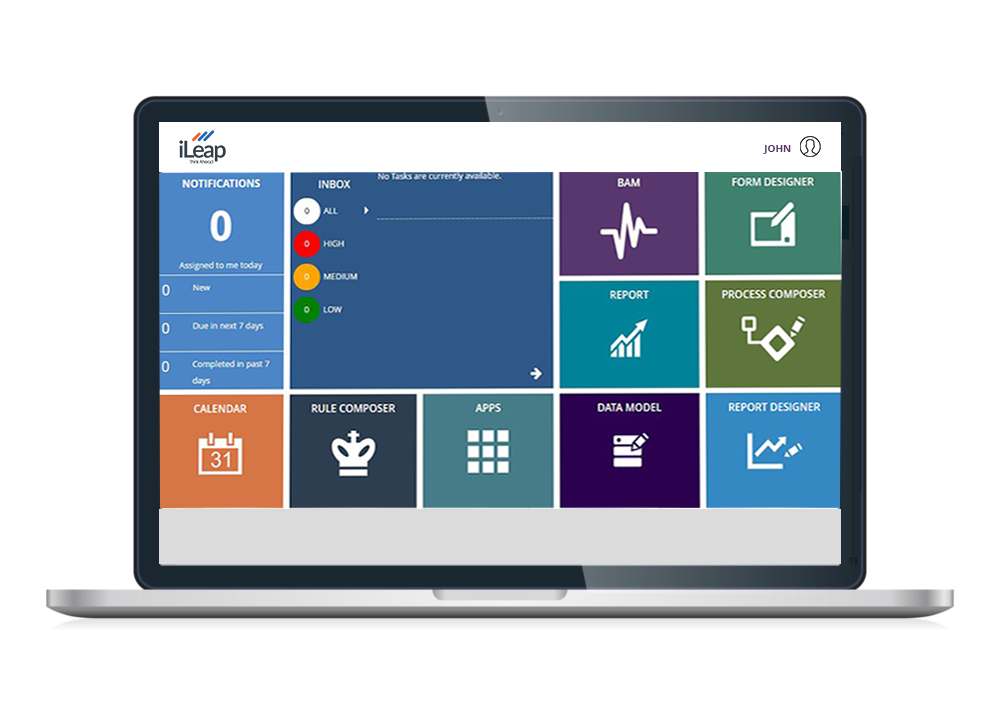Recommended Tips On Selecting Legacy application modernization with Low-code
Wiki Article
Advantages Of Low-Code Application Development In Terms Of Integration Capabilities
Low-code development is an excellent way to build applications that are able to seamlessly integrate different platforms and services. These are the main benefits of connectors that are pre-built, APIs, as well as other tools:
A Wide Variety of Connectors. Low-code systems usually include a wide range of built-in connections to the enterprise system that are widely used (e.g. cloud-based services, databases, CRM). The process of integrating the systems can be made simpler.
API Integration: A lot of platforms have built-in API integration capabilities. Developers can effortlessly connect with data from other sources and services.
Simple to use:
Drag-and–Drop Integration Integrations can be created with drag and drop interfaces. Developers and non-developers are able to accomplish this without having to write a lot of code.
Visual Workflow Builders Visual tools to create workflows and data flow aid in understanding and establishing integrations more intuitively.
Standardized Integration Methods:
SOAP & RESTful Services Support for web services standardization such as REST and SOAP allows easy integration with many external systems.
OData and Other Standards Support for standards such as OData enables easy access and manipulation of data across a variety of platforms and applications.
Real-Time Data Synchronization:
Real-Time Integrations: Lowcode platforms can manage data synchronization in real time between applications and system, ensuring data is always up-to-date and consistent across the organisation.
Event-Driven architecture: Certain platforms support event-driven architectures. This lets applications respond to events in real time and is crucial for interactive and dynamic applications.
Legacy System Integration:
Bridging Old and New Systems Low-code platforms typically provide tools to integrate with legacy systems, allowing organizations to upgrade their IT infrastructure without having to completely revamp the existing system.
Data Migration: Built-in tools help transfer data from old applications to new ones built on platforms that have low-code.
Integration of Third Party Services:
Cloud Services Integration: Easy scaling and deployment of apps can be achieved through seamless integration with cloud services like AWS, Azure and Google Cloud.
Business Applications Integration : Low-code platform can integrate with diverse applications for business, like Salesforce.com, SAP, Microsoft Dynamics and others, to enable a seamless workflow across different aspects of business.
Simplified Data Processing:
Unified Data Models - Certain low-code platforms have unification of data models which make it easier to manage data and integration between different systems.
Data Connectors: Data connectors that are pre-configured to permit easy access to and manipulation of data derived from various sources.
Security and compliance:
Secure Integrations: Low-code platforms guarantee that integrations adhere to security protocols and standard safeguarding data while in transportation as well as during rest.
Security Features: These platforms often have features to ensure that the integrations are compliant with regulations (e.g., GDPR, HIPAA), providing assurance for companies that handle sensitive information.
Extensibility:
Custom Code and Scripts: Low-code platforms are often able to accommodate more complex integrations through the use of scripts and custom codes. This allows for greater flexibility without compromising on user-friendliness.
Plug-in Ecosystem An ecosystem of plugins and extensions can enhance the integration capabilities that allow users to include additional functions as they need.
The overall low-code platform's integration capabilities can be a very effective tool to create interconnected applications that are efficient and scalable. They make it easier to connecting different systems, improve data flow and allow businesses to adopt new technologies while leveraging existing ones. See the top Low-code Platform for application development for more recommendations including cloud software applications, azure sql server, developing mobile apps, mobile development platforms, driver jdbc, sso azure, cross platform mobile app development, rad application development, develop cross platform mobile app, build a docker container and more.

Benefits Low-Code Applications In Safety And Governance
Low-code development of applications offers a variety of advantages in terms of security and governance. These are essential for ensuring that applications are compliant and secure. They also ensure that they are well-managed throughout their lifespan. These are the main benefits: Centralized Governance
Unified Management Console: Low-code platforms typically have a central management console that allows administrators to oversee and manage all the applications to ensure a uniform governance throughout the organization.
Role-Based Access Control (RBAC) The majority of these platforms offer strong access control based on role which allows administrators to set and enforce access policies. This allows only authorized users to modify or access certain elements of a program.
The Compliance Process and Regulatory Adherence:
Many low code platforms include built-in compliance features. These are built to ensure that the applications are compliant with the industry standard (e.g. GDPR, HIPAA). These platforms offer frameworks and tools to make sure that the applications are compliant with these requirements.
Audit Trails and Logging Comprehensive logs and audit trails can be incorporated to allow organizations to track change, monitor access and ensure the compliance.
Increase Security Measures
Data Encryption Low-code platforms often include built-in encryption of information in transit and at rest, which protects sensitive information.
Security Certifications: Many companies of low-code services have security certificates, such as ISO 27001 or SOC 2 to prove that they are able to meet the highest standards. These certificates provide additional assurances to users.
Automated security updates:
Regular Security Updates and Patches : Low-code platform handle automatic security updates, patches and updates. Thus, applications are protected from current threats without requiring developer intervention manually.
Security Monitoring: Continuous monitoring of security tools are typically included, providing immediate alerts and insight into security concerns that could be a problem.
Data Governance
Data Access policies These platforms allow organizations to determine and enforce their data access policy to ensure that only authorized users have access to data and that it is correctly used.
Data Masking Anonymization The built-in tools for data masking and features for anonymization help safeguard sensitive information, particularly in testing and development environments.
Consistent Lifecycle Management of Applications:
Development and deployment pipelines: Low-code platforms offer integrated development and deployment, which includes security checks. This ensures security throughout the entire lifecycle of the application.
Version Control - Integrated version controls help track modifications to applications and allow the application to be reversed, if required. They also ensure the integrity and integrity of the application.
Authorization and User Authentication:
Single Sign On (SSO) Single Sign On (SSO): Single sign-on as well as other advanced authentication techniques simplify management of users while increasing security.
Multi-Factor Authentication Most platforms have integrated support for multi-factor authentication. This provides an additional layer of security to the applications.
Compliance Monitoring and Policy Enforcement Compliance Monitoring:
Low-code platforms are often pre-defined with policy templates to assist organizations in implementing governance and security policies quickly.
Tools for Monitoring Compliance The tools offer continuous monitoring and reporting about compliance levels, which makes it easier to identify and address possible issues in advance.
Integration into Existing Security Infrastructure
Seamless Integration: Platforms with low-code technology are built to integrate seamlessly with existing tools and infrastructure such as SIEM (Security Information and Event Management solutions) and firewalls.
API Security: API integrated security ensures integrations with external system are secure. Keep data safe and ensure the application's consistency.
Best practices and training:
Guided Best Practices : Many platforms provide guidelines and best practices to assist non-developers comply with security standards.
Security Training Some low-code service providers provide security tools and training for users in order to help them understand how to create and maintain secure applications.
Overall the security and governance benefits of low-code development assure that the applications are developed and maintained in a safe, compliant, and controlled manner. These platforms are equipped with the frameworks, tools and regulatory compliance that are required to secure sensitive data of customers and enforce policy. They also keep regulatory compliance in check, while also simplifying the oversight and management over the application development process. Read the top rated agree with about Legacy application modernization with Low-code for site advice including develop web app, application modernisation, mobile development platforms, push notifications android, app dev platform, azure sql, app platforms, microsoft azure sql, stored sql procedures, develop web application and more.

Support From Vendors And Community Are Two Of The Advantages Of Low Code Application Development.
Low-code platforms offer significant advantages in terms of community support and vendor support, both of which are crucial to the success in the implementation, maintenance and improvement of applications. Here are some key advantages.
Comprehensive Technical Support:
Support Teams with Dedicated Support Many low-code platforms offer dedicated support teams that can assist in technical problems, problem-solving and advice. This ensures that any issues will be quickly addressed.
Some vendors provide support 24 hours a day. This is particularly beneficial to global businesses with various time zones.
Training and Onboarding
The structured training programs offered by vendors offer structured training courses, such as webinars or certification courses. This helps users quickly grasp the platform.
Many companies offer customized onboarding that helps customers to make use of their platform effectively and customize it to meet their needs.
Regular Updates and Enhancements
Continuous Improvement : Low-code platforms providers often release periodic upgrades that include new functionality, performance enhancements and security patches. These updates ensure that their platform stays current and secure.
Feedback Integration: A lot of vendors integrate user feedback in their process of development. This helps ensure that the platform is able to adapt to the evolving needs and wants of their users.
Comprehensive Documentation:
User documentation in detail Users will find solutions to their issues by reading a detailed and organized manual that covers all aspects of the program beginning with its fundamental functionality to more sophisticated modifications.
API References API documentation can help developers customize and integrate applications with the Low-Code platform.
Consulting and Professional Services
Expert Consultation. Vendors offer a range of consulting services, including architecture design as well as strategic planning, and even complex platform implementations. They ensure that customers get the most out of their platform.
Custom Development Services: Some companies offer custom development services to develop specific features or integrations that aren't available in the standard package.
Community Support
Active User Community:
Discussion boards and forums: Many platforms with low-code have vibrant online community where users can get help, discuss solutions and collaborate in finding the best techniques.
Local and virtual User Groups These groups provide opportunities to connect, share knowledge and share your experiences.
Knowledge Sharing & Collaboration:
Community-Contributed Resources: Users often share templates, modules, and extensions that they have developed, which can be reused or adapted by others, accelerating development and innovation.
Crowdsourced Problem-Solving: The collective expertise and collective knowledge of a community can be a valuable source to solve problems and discover creative solutions to complex problems.
Learning and development:
Community-Led Training: Many communities host workshops, training sessions and webinars, often conducted by experienced users who share practical knowledge and more advanced methods.
Online Tutorials: The community members contribute and share numerous online tutorials, how-tos, and tutorials. These tutorials are made available to everyone.
Feedback and Influence
Product Feedback Channels. Community forums typically include channels that allow users to give feedback to the company. Feedback from customers can influence the development and improvement of features.
Beta Testing Active communities could be able to participate. This allows them to get early access and to be part of the development of the platform.
Recognition and Support
Community Recognition Programs: Many companies offer recognition programs to active members of the community. Some examples include MVP (Most Valuable Professionals), which recognizes the contributions.
Peer Support. Community members offer peer support. They share their knowledge with users who are less familiar and offer advice. This creates a community of support and collaboration.
In general, the combination of solid vendor support, as well as an engaged, active community creates a broad ecosystem of support for low-code development. The combination of strong vendor support and a vibrant and engaged community creates an entire support network for low-code development.
